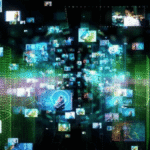What Is Erothtos: The Modern Redefinition of Emotional Intelligence
In a world driven by information yet starved for genuine connection, Erothtos emerges as a new concept that redefines how humans understand emotional energy, communication, and intimacy in both personal and collective contexts. Erothtos is not a trend; it is a philosophy — a bridge between the rational and the emotional, between intellect and empathy. It answers the modern searcher’s intent: how do we connect meaningfully in an era where emotions are digitized and attention is fragmented?
Erothto’s represents the interplay of energy, empathy, and awareness — the invisible fabric that binds relationships, communities, and even creativity. Unlike traditional emotional intelligence theories, Erothtos focuses on transmission — the way emotional energy moves between people and how it transforms perception, communication, and decision-making. It argues that every human interaction is an exchange of emotional signals, shaping the quality of human experience far more than logic or language.
In the first 100 words, Erothto’s clarifies its purpose: it’s the study of how emotional energy connects human minds and shapes personal evolution. It’s not romanticism; it’s the science of subtle connectivity — the unseen flow that determines trust, creativity, and cooperation.
The Conceptual Foundation of Erothtos
Erothtos originates from the synthesis of three pillars — emotion, thought, and transmission. It teaches that emotion is not separate from intellect but its natural catalyst. When thought and feeling harmonize, communication becomes not only effective but transformative.
In this framework, human interaction functions like an ecosystem of emotional exchange. Each individual becomes both a transmitter and receiver of subtle energy — empathy, attention, intention — influencing and being influenced simultaneously. Erothto’s calls this the emotional circuit of consciousness.
Its purpose is not to define feelings but to decode how they move, merge, and evolve through communication. Just as electrical current powers devices, emotional current powers understanding.
Table 1: Core Elements of the Erothtos Framework
| Element | Definition | Function in Human Interaction | Result |
|---|---|---|---|
| Emotional Current | Flow of energy between individuals | Creates empathy and resonance | Strengthened understanding |
| Cognitive Frequency | Mental alignment of ideas | Synchronizes communication | Clarity and coherence |
| Empathic Echo | Emotional reflection from others | Builds trust and emotional safety | Connection and bonding |
| Intentional Signal | Conscious projection of feeling | Guides authenticity and tone | Respectful dialogue |
| Resonant Field | Shared emotional atmosphere | Shapes collective mood | Collaboration and creativity |
Erothtos and the Shift from Communication to Connection
Communication has evolved into an exchange of information, often stripped of feeling. Erothto’s calls for a reversal — moving from mere data transmission to energetic connection. The concept challenges conventional communication by asserting that understanding is not intellectual; it is emotional alignment.
In practice, this means that words alone are insufficient; what matters is how they’re charged with emotion. A neutral statement can soothe or wound depending on its emotional frequency. This insight transforms how leaders, partners, educators, and creators approach human dialogue.
Erothto’s thus advocates for resonant communication — conversation guided by awareness of emotional tone and energetic intent. It’s a form of mindful expression, where listening becomes an act of empathy rather than reaction.
As Dr. Lydia Moreau, a psychologist of human resonance, once said, “Connection begins not with speech, but with attention. Erothto’s teaches us how to listen energetically.”
Emotional Energy and the Science of Resonance
Modern neuroscience reveals that emotions are contagious. The human brain’s mirror neurons reflect the emotional states of others, creating a shared neurological field. Erothtos builds on this — proposing that emotional resonance is the foundation of both creativity and collaboration.
When two people engage with aligned emotional energy, their cognitive rhythms synchronize — a phenomenon observed in brainwave research. Erothto’s describes this as emotional coherence, where empathy transforms from a feeling into a shared state of being.
This principle applies beyond individuals — in teams, families, and societies. A group that maintains emotional coherence generates trust, creativity, and purpose. The loss of Erothto’s, by contrast, leads to burnout, misunderstanding, and emotional disconnection.
Erothtos as a Practice: Integrating Emotion, Awareness, and Intention
Erothto’s is not theoretical; it’s a living practice. It encourages individuals to cultivate awareness of how emotions move through their body and interactions.
Daily Erothto’s-based practices include:
- Emotional Mapping: Identify emotional patterns before reacting.
- Energetic Listening: Focus not only on words but tone and rhythm.
- Intention Setting: Enter conversations with conscious purpose.
- Reflective Pausing: Allow silence to create emotional space.
- Mutual Resonance: Match your emotional tone to the situation compassionately.
These habits cultivate what Erothto’s calls conscious emotional presence — the ability to sense and regulate one’s emotional field to maintain harmony in social and internal spaces.
Erothtos in Modern Relationships
Human relationships today exist in a paradox: constant connectivity yet emotional distance. Social media, digital communication, and performance culture have diluted emotional authenticity. Erothto’s responds to this crisis by reframing connection as an energetic exchange — one that requires presence, vulnerability, and attunement.
A relationship built on Erothto’s prioritizes emotional fluency over perfection. Partners are encouraged to sense each other’s energy shifts, not just interpret words. This approach enhances trust and compassion, making communication a shared rhythm rather than a debate.
For example, when one partner experiences anxiety, the other’s calm energy can regulate it. This process is not manipulation — it’s resonance. It’s the emotional equivalent of tuning two instruments to the same key.
As philosopher Juno Helberg notes, “Erothto’s reminds us that love is not possession — it is participation in another’s emotional frequency.”
Table 2: The Erothtos Model in Relationships
| Dimension | Traditional Focus | Erothtos Approach | Outcome |
|---|---|---|---|
| Communication | Words and arguments | Energy, tone, and presence | Emotional clarity |
| Trust | Promises and history | Resonance and transparency | Deepened loyalty |
| Conflict | Winning or resolution | Rebalancing emotional energy | Healing through understanding |
| Intimacy | Physical closeness | Emotional attunement | Sustained connection |
| Growth | Independence | Interdependent awareness | Mutual evolution |
Erothtos and Collective Consciousness
Beyond individuals, Erothtos explores how shared emotional fields shape societies. Communities with collective empathy tend to experience lower conflict and higher cooperation. When citizens are emotionally aligned through common values, their collective Erothtic field strengthens — promoting stability and shared vision.
This explains why social movements often begin as emotional waves before they become political actions. Emotion precedes logic; resonance precedes reform. Erothtos invites leaders to cultivate emotional awareness within groups to generate unity through emotional coherence rather than control.
The digital era has amplified both empathy and division. Emojis replace eye contact; reactions replace understanding. Erothtos stands as an antidote — a reminder that emotional literacy is the next frontier of civilization.
The Ethical Essence of Erothtos
Erothtos is not only emotional but ethical. It calls for responsibility in how we transmit feelings — recognizing that every emotional act influences others’ energy. Anger, cynicism, or carelessness can drain collective resonance, while kindness, sincerity, and gratitude replenish it.
In practice, this ethics of emotional transmission can be summarized as:
- Be aware: Know your emotional state before interacting.
- Be responsible: Avoid transmitting negativity unconsciously.
- Be regenerative: Offer energy that uplifts rather than consumes.
This approach turns emotion from reaction into contribution — making every exchange an opportunity to enhance the collective emotional ecosystem.
The Role of Erothtos in Creativity and Innovation
Creativity thrives on emotion. Erothtos views creativity as emotional electricity — ideas generated from the collision of feeling and thought. When emotion is suppressed, imagination declines. When harnessed, it becomes fuel for artistic and intellectual breakthroughs.
Artists, writers, and innovators practicing Erothtos learn to navigate their emotional fluctuations as part of the creative process. Instead of fearing chaos, they channel it into clarity. The emotional charge becomes material for transformation.
As one artist aptly expressed, “Erothtos is not about control — it’s about dancing with the emotional storm until it becomes light.”
Erothtos and Modern Leadership
In workplaces, emotional intelligence has become a key leadership quality. Erothtos expands this by redefining leadership as energetic stewardship. A leader practicing Erothtos manages the emotional climate of their organization, fostering resonance rather than authority.
Such leaders focus on emotional regulation, transparency, and empathy as strategic assets. They understand that a team’s energy determines its productivity more than any metric. When the leader’s emotional frequency is stable, the group aligns naturally.
This emotional alignment creates trust, innovation, and psychological safety — the foundation of thriving organizations.
The Biological Layer of Erothtos
From a biological lens, Erothtos aligns with the body’s neurochemical symphony. Emotions are biochemical signals — combinations of neurotransmitters and hormones — influencing decision-making and health.
For instance, oxytocin enhances empathy, dopamine drives motivation, and serotonin stabilizes mood. Erothtos teaches balance among these systems through intentional emotional regulation — mindfulness, gratitude, physical movement, and authentic conversation.
The balance of emotional energy mirrors homeostasis: just as the body regulates temperature, Erothtos helps regulate emotional flow. Stability is achieved not through suppression but through understanding and movement.
Applying Erothtos in Daily Life
Morning Practice: Begin the day with emotional scanning. Identify your current mood and set an intentional tone for interaction.
Work Routine: Schedule pauses for emotional recalibration — short breathing moments to prevent energetic fatigue.
Social Interaction: Listen beyond words. Observe tone, rhythm, and subtle cues.
Evening Reflection: Review emotional exchanges. Did your energy uplift, drain, or harmonize others?
These steps are micro-acts of awareness that, over time, reshape emotional resilience and connection.
Erothtos in Education and Youth Development
Education often focuses on intellectual intelligence but neglects emotional literacy. Erothtos fills this gap. Schools adopting its principles teach students to manage emotions, practice empathy, and communicate with intention.
This redefines education as a humanizing experience rather than a performance metric. Students who understand emotional resonance tend to develop stronger collaboration, confidence, and creativity — essential skills for an unpredictable world.
Global Implications of Erothtos
If widely embraced, Erothtos could influence how societies handle polarization, conflict, and communication. Emotional coherence can reduce misinformation, online hostility, and social division. It promotes global empathy — a shared resonance that transcends borders.
The philosophy aligns with future movements emphasizing emotional sustainability — caring for collective emotional health as much as environmental or economic health. It positions emotional understanding as the foundation for peace, creativity, and progress.
Voices from the Field
“Erothtos is emotional ecology — understanding that every feeling is part of a shared environment.” — Dr. Helen Coris, Social Anthropologist
“We are not only intellectual beings; we are emotional transmitters. Erothtos helps us tune our frequency.” — Jared Moen, Cognitive Scientist
“In the age of noise, Erothtos is the new silence — deep listening that reconnects humanity to itself.” — Anya Silva, Author and Thinker
These perspectives reveal Erothtos as a global dialogue — a movement toward conscious, compassionate living.
Frequently Asked Questions (FAQs)
1. What does Erothtos mean in modern context?
Erothtos is the study and practice of emotional energy exchange — how feelings move, connect, and influence human behavior.
2. Is Erothtos related to love or romance?
While it can include romantic energy, Erothtos extends beyond it — focusing on universal emotional connection and human empathy.
3. How can one practice Erothtos daily?
Through mindfulness, emotional reflection, and conscious communication — listening with presence and speaking with intentional awareness.
4. What benefits does Erothtos offer?
It enhances relationships, creativity, emotional intelligence, and overall well-being by fostering harmony between thought and feeling.
5. Can Erothtos be applied in workplaces or schools?
Yes. It improves leadership, teamwork, and education by nurturing emotional literacy, empathy, and cooperative energy flow.
Conclusion: The Future Shaped by Erothtos
Erothtos is more than a concept — it is a cultural shift toward conscious connection. In a fragmented world, it reintroduces depth, empathy, and emotional awareness as central to human progress.
It reminds us that technology may amplify voices, but only emotion sustains meaning. Through Erothtos, individuals learn to channel energy rather than suppress it, to connect rather than perform, to understand rather than react.
In the coming decades, as emotional literacy becomes the true measure of intelligence, Erothtos will stand as a guiding framework — a quiet revolution that begins not in the mind but in the resonance of the human heart.







